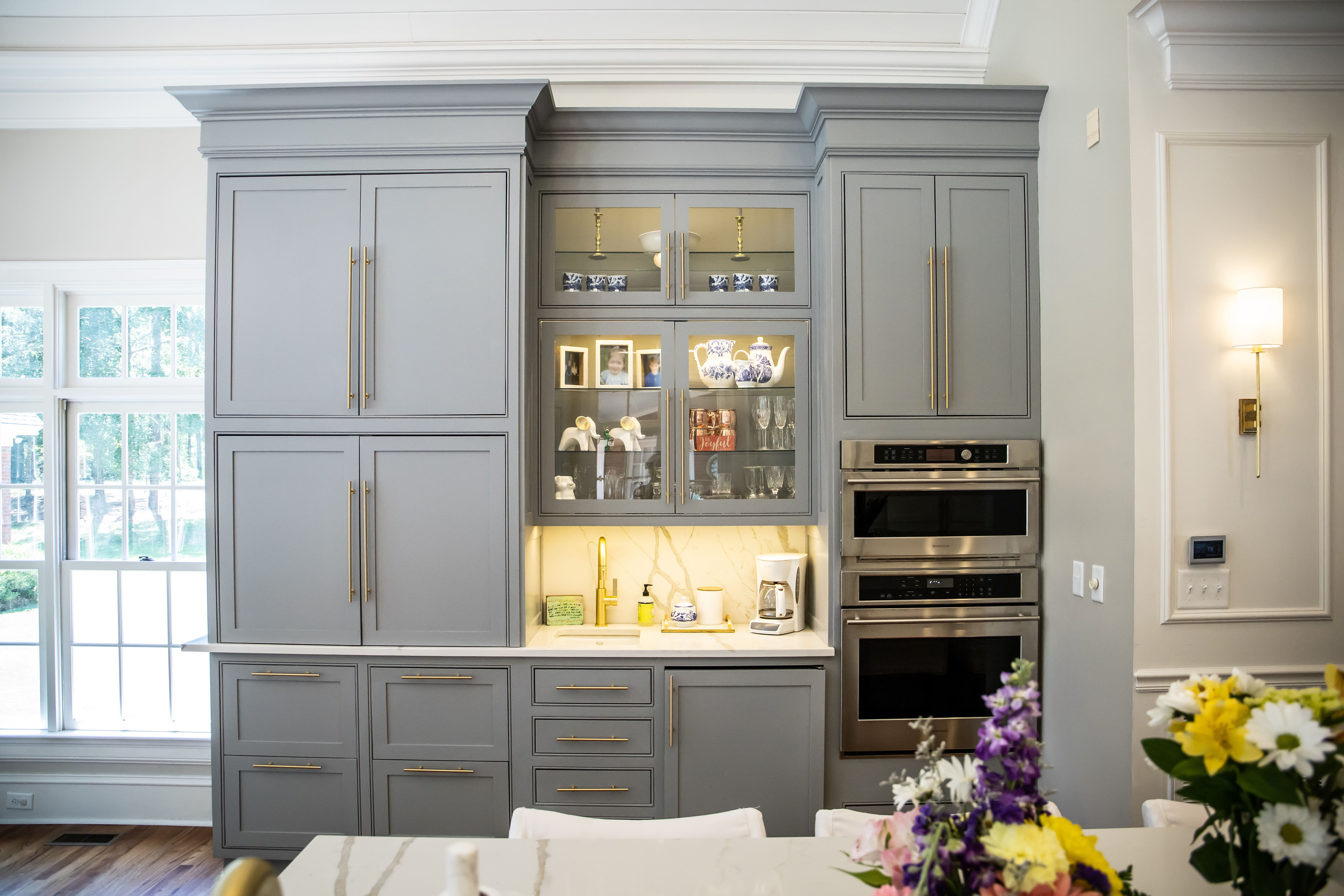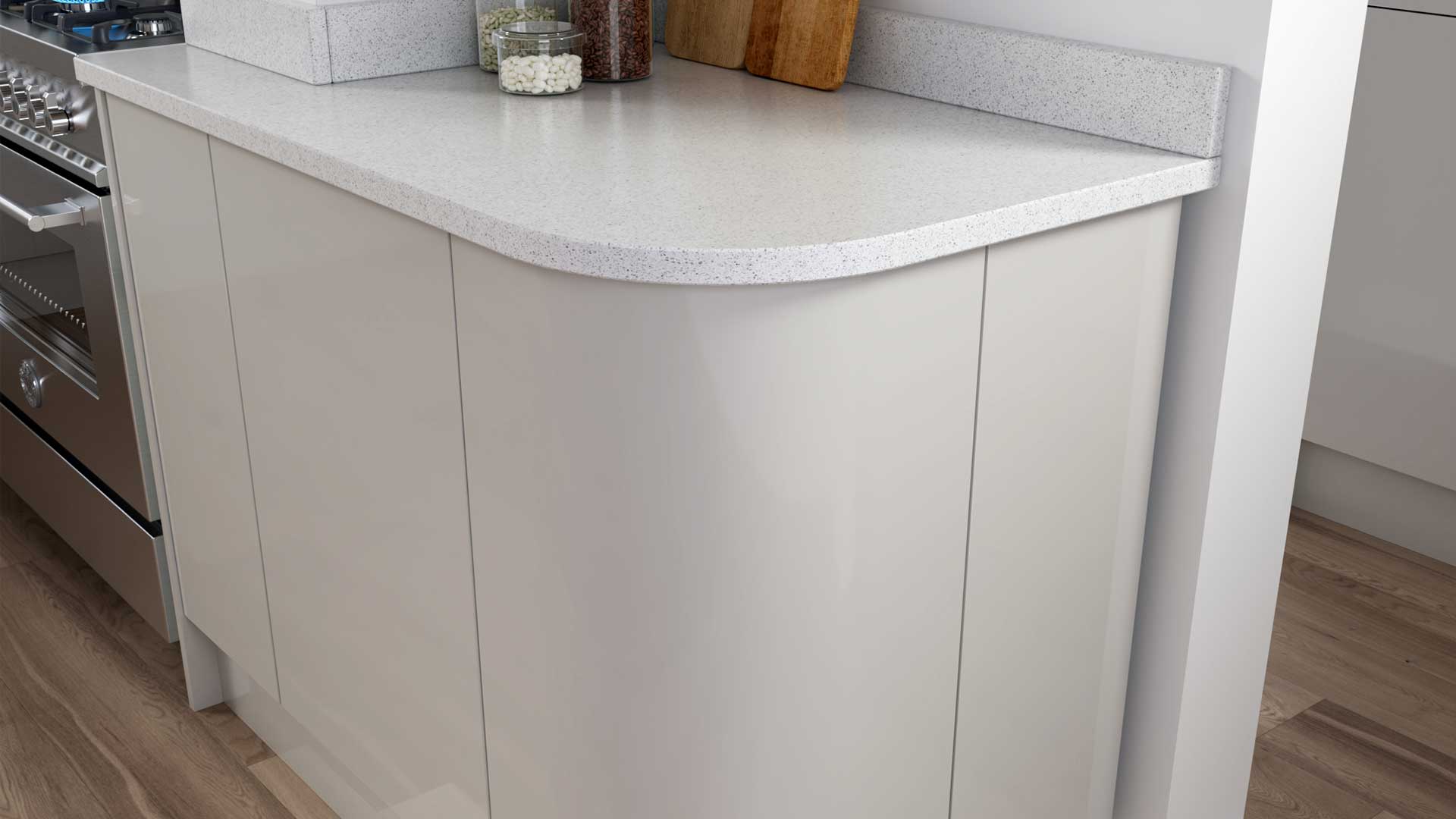Historical Context of Roman Ogee Cabinet Doors

The ogee curve, a graceful S-shaped profile, possesses a surprisingly rich history, its elegant form echoing across millennia in architectural and decorative arts. While its widespread adoption in cabinetmaking is a later development, the origins of the ogee profile itself are deeply rooted in Roman design principles, influencing subsequent styles across centuries. This exploration delves into the Roman contribution to the ogee’s evolution, highlighting its transition from grand architectural features to the intimate scale of cabinet doors.
The Roman influence on the ogee’s presence in cabinet design is not a direct lineage of specific cabinet designs but rather a transmission of aesthetic principles. Romans mastered the use of curves in architecture, achieving a balance between structural integrity and visual appeal. This mastery laid the groundwork for later adaptations in smaller-scale applications, including furniture. The inherent elegance and visual rhythm of the ogee curve, so readily apparent in Roman architecture, made it a natural candidate for adoption in later periods.
Roman Architectural Examples Featuring Ogee Curves
Roman architecture showcases the ogee curve in various contexts, demonstrating its versatility and adaptability. While not always explicitly termed “ogee” in historical documents, the characteristic S-curve appears prominently in molding profiles, decorative elements on capitals and entablatures, and even in the subtle curves of certain archways. The use of these curves was not merely decorative; they contributed to a sense of movement and fluidity, softening the otherwise rigid lines of Roman structures. Consider, for example, the intricate moldings found on the cornices of Roman temples – often incorporating ogee profiles that enhanced the visual impact of these grand buildings. The subtle undulations of these curves added a sense of dynamism and refinement to the overall design. The application of similar curves in smaller-scale architectural elements, such as decorative panels and friezes, further demonstrates the adaptability of this profile.
Comparison of Roman Ogee Designs with Other Historical Periods
While the Romans established a precedent for the use of ogee curves, the style evolved significantly across different historical periods. Compared to later periods, Roman ogee profiles tend to be more restrained and less flamboyant. Renaissance and Baroque periods, for example, often featured more exaggerated and ornate ogee curves, incorporating elaborate embellishments and intricate detailing. Gothic architecture, in contrast, generally avoided the smooth, flowing lines of the ogee, favoring pointed arches and angular forms. The Roman ogee, therefore, represents a more classical and understated approach, prioritizing elegance and balance over excessive ornamentation. The difference is a matter of degree and context; the fundamental S-curve remained a constant, but its application and interpretation shifted according to prevailing aesthetic preferences.
Timeline of Roman Ogee Cabinet Door Style Development
The development of the Roman ogee style in cabinet doors is not a straightforward progression with clearly defined stages, but rather a gradual adoption and adaptation across centuries. The following table provides a simplified overview.
| Period | Style Characteristics | Notable Examples | Image Descriptions |
|---|---|---|---|
| Roman Empire (27 BC – 476 AD) | Simple, restrained ogee curves in architectural moldings and decorative elements. Emphasis on balance and proportion. | Moldings on Roman temples, decorative elements on sarcophagi. | A detailed illustration of a Roman temple cornice showcasing subtle ogee curves in the molding. Another image depicts a Roman sarcophagus with ogee-shaped decorative elements around its base. |
| Renaissance (14th-16th centuries) | More pronounced ogee curves, often incorporated into elaborate frames and decorative panels. Increased ornamentation. | Intricate frames on Renaissance-era chests and cabinets. | A depiction of a Renaissance-era chest with a highly detailed frame featuring prominent ogee curves. The curves are more pronounced than in Roman examples, and intricate carvings are incorporated into the design. |
| Baroque (17th-18th centuries) | Highly ornate and exaggerated ogee curves. Complex compositions with swirling and dynamic lines. | Elaborate cabinet doors from the Baroque period, often featuring shell-like ogee curves. | An image showcasing a Baroque cabinet door with shell-like ogee curves, heavily ornamented with carvings and gilding. The curves are more dramatic and less restrained than in previous periods. |
| 19th and 20th Centuries | Ogee profiles continued to be used, often in simplified and neoclassical forms. Revival styles draw inspiration from earlier periods. | Neoclassical furniture incorporating simplified ogee curves. | An image showing a 19th-century cabinet with restrained ogee curves, reflecting a neoclassical style. The curves are simpler and less ornate compared to Baroque examples. |
Design and Construction Techniques of Roman Ogee Cabinet Doors (Modern Interpretations)

The Roman ogee profile, with its elegant S-curve, remains a timeless design element in cabinetry. Understanding both traditional and modern approaches to crafting these doors is crucial for achieving a high-quality, aesthetically pleasing result, whether striving for historical accuracy or a contemporary interpretation. This section details the techniques involved, comparing and contrasting the methods, and outlining a modern cabinet project incorporating this classic profile.
The traditional crafting of Roman ogee cabinet doors involved meticulous handwork and a deep understanding of wood properties. High-quality hardwoods, such as mahogany, cherry, or walnut, were preferred for their strength, stability, and ability to take a fine finish. Joinery was typically executed using mortise and tenon joints, ensuring strength and durability. The ogee profile itself was painstakingly shaped using hand planes, chisels, and spokeshaves, requiring significant skill and patience. Finishing involved multiple layers of hand-rubbed oil or varnish, enhancing the wood’s natural beauty and protecting it from the elements.
Traditional Methods of Crafting Roman Ogee Cabinet Doors
Traditional methods emphasize hand craftsmanship and time-honored techniques. Wood selection was paramount; the stability and beauty of the wood directly impacted the final aesthetic. Hardwoods like mahogany, cherry, and walnut were favored for their durability and rich grain. Joinery relied on precise mortise and tenon construction, creating strong, lasting bonds. The ogee profile was meticulously carved using hand tools, a testament to the artisan’s skill. Finally, the finishing process involved multiple layers of hand-rubbed oil or varnish, providing both protection and a deep, lustrous sheen. The entire process was labor-intensive but resulted in a piece of furniture of exceptional quality and character.
Modern Techniques for Recreating Roman Ogee Cabinet Doors
Modern woodworking techniques offer increased efficiency while maintaining the aesthetic appeal of traditional Roman ogee doors. Computer-numerical control (CNC) routers can precisely shape the ogee profile, significantly reducing labor time. While CNC machining provides speed and precision, hand-finishing techniques are often still employed for a superior, more nuanced result. Modern adhesives and joinery methods, such as dowel joints reinforced with glue, provide strong and reliable connections, often surpassing the strength of traditional mortise and tenon joints when properly executed. Modern finishes, including catalyzed lacquers and polyurethane, offer enhanced durability and protection compared to traditional oil-based finishes.
Comparison of Traditional and Modern Construction Methods
Traditional methods, while resulting in exquisite craftsmanship, are significantly more time-consuming and labor-intensive than modern methods. Modern techniques, particularly CNC machining, dramatically increase efficiency, allowing for greater production volume. However, the inherent human touch and subtle variations in texture and finish present in hand-crafted doors are often considered superior in aesthetic appeal by many connoisseurs. The choice between traditional and modern methods depends on the desired level of craftsmanship, budget, and production scale.
Design and Construction of a Modern Cabinet with a Roman Ogee Door
This project utilizes modern techniques to efficiently create a cabinet featuring a Roman ogee door.
- Materials: Cabinet carcass constructed from ¾” Baltic birch plywood; Roman ogee door from solid cherry; high-quality wood glue; dowels; catalyzed lacquer finish.
- Tools: Table saw; CNC router (or router with ogee bit); drill press; sanders (orbital and random orbital); spray gun (for lacquer).
- Process:
- Cut and assemble the cabinet carcass using the table saw and wood glue. Reinforce joints with dowels.
- Use a CNC router (or router with a carefully chosen ogee bit) to shape the cherry door panel to the desired Roman ogee profile. Alternatively, a skilled woodworker can shape the profile by hand.
- Assemble the door frame and attach the panel. Ensure proper alignment and squareness.
- Sand all surfaces smooth, starting with coarser grits and progressing to finer grits.
- Apply several coats of catalyzed lacquer using a spray gun, allowing sufficient drying time between coats.
- Install hinges and hardware. Ensure proper door alignment and function.
Artistic and Cultural Significance of Roman Ogee Cabinet Doors

The Roman ogee, a graceful S-curve, transcends mere functionality in cabinet doors; it embodies a rich artistic and cultural legacy, reflecting evolving aesthetic sensibilities across centuries. Its enduring appeal stems from a potent combination of elegant form, skilled craftsmanship, and symbolic resonance within various design traditions.
The ogee curve’s symbolic meaning is multifaceted. In Roman contexts, the curve, while not explicitly carrying a singular, codified meaning like some religious symbols, subtly evoked fluidity, movement, and the harmonious integration of opposing forces—the upward and downward sweeps of the curve mirroring the ebb and flow of life itself. This inherent dynamism contributed to its adoption in architecture and decorative arts, suggesting a sense of vitality and refined elegance. Subsequent design periods, from the Gothic to the Rococo, reinterpreted and re-contextualized the ogee, adapting its inherent grace to their own stylistic languages.
The Aesthetic Merit of Roman Ogee Cabinet Doors
The artistic merit of Roman ogee cabinet doors rests primarily on their refined elegance and the superior craftsmanship evident in their execution. The precise carving of the ogee profile, often complemented by intricate moldings and decorative elements, speaks to the skill and artistry of the cabinetmakers. The subtle interplay of light and shadow across the curved surfaces creates a visually captivating effect, enhancing the overall aesthetic appeal. The choice of materials, from richly figured woods to inlaid veneers, further contributes to the luxurious feel and visual richness of these pieces. The doors themselves were often integral to larger, finely crafted pieces of furniture, acting as focal points within a harmonious ensemble.
Examples of Roman Ogee Doors in Different Contexts
Roman ogee profiles found their way into diverse applications beyond cabinet doors. In Roman architecture, ogee arches and moldings appeared in structures ranging from grand public buildings to private villas. The curve’s adaptability allowed for seamless integration into various architectural styles. In furniture, beyond cabinets, the ogee motif adorned chairs, tables, and other pieces, demonstrating its versatility. In decorative arts, the ogee was incorporated into smaller objects such as picture frames, mirrors, and decorative panels, showcasing its enduring appeal across various scales and contexts. The consistent presence of the ogee across these different media underscores its significance as a design element transcending specific applications.
Comparative Aesthetics of Roman Ogee and Other Cabinet Door Styles
The Roman ogee cabinet door’s aesthetic impact differs markedly from other styles. Compared to the stark geometric simplicity of Shaker doors, the ogee profile offers a pronounced sense of dynamism and visual richness.
The Roman ogee’s curvilinear grace stands in direct contrast to the rectilinear austerity of Shaker design, creating vastly different aesthetic experiences.
In comparison to the ornate detailing of Baroque cabinet doors, the Roman ogee often exhibits a more restrained elegance, prioritizing the graceful curve itself over excessive ornamentation.
While both Roman ogee and Baroque doors employ elaborate detailing, the former emphasizes the fluidity of the ogee curve as a primary design feature, whereas Baroque doors often feature a profusion of sculptural elements.
This controlled elegance makes the Roman ogee style exceptionally versatile, capable of complementing both minimalist and maximalist interior design schemes.
